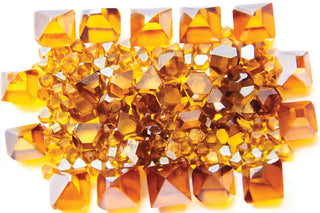AccurA Diamond Tools have been providing premium Diamond tools to the construction and trade industry for nearly 10 years. But Why Diamond Blades over other options? We discuss the technology behind the Diamond Blades to provide clarity when you are presented with a choice...
DIAMOND BLADES
are designed to cut concrete, asphalt, stone and some metals. A blade consists of a series of cutting SEGMENTS attached to the circumference of a steel disc, known as the Blank. When working at speed they become highly abrasive. Diamond tools grind the material rather than cut it, however cut is the common description. The segments are carriers of DIAMOND CRYSTALS, held in a metal alloy known as the BOND or MATRIX. The diamond crystals and bonding matrix are heated and shaped into specially engineered segments or CONTINUOUS RIMS. These are wider than the blade blank so that when cutting takes place, the clearance in the cut allows the dust to pass quickly either side of the blade and prevents it from binding.
The Diamonds
In most cases the diamonds are synthetically manufactured to specific shapes, depending on what material they are to cut, though some segments can contain a mix of synthetic and real. Synthetic diamonds have exactly the same degree of hardness as natural diamonds but, whereas natural diamonds vary in structure, synthetic ones can be manufactured to optimum structures that remain consistent. They can also be adjusted in grain size and crystalline shape to suite the cutting of specific materials and thereby optimize the life of the blade. Blade life is not solely dependent on how many diamonds are present, but rather on a balance between diamond CONCENTRATION and bond COMPOSITION, in relation to the material to be cut. There are three different methods of joining the segments to the blank: SINTERING. This fuses the bond metals, with heat and high pressure, onto the blank. Cheaper blades use this process. LASER WELDING. Used for high quality blades where the join is permanent. Any segment-loss is almost always caused by user error. SOLDERING. On large diameter Wet Cutting discs, the segments are brazed to the blank using silver solder. Because a wet blade will be working with cooling water, it will not require its segments to be joined at high temperature.
Bond
Materials to be cut will rank somewhere on a scale from HARD & DENSE to SOFT & ABRASIVE. When the material is hard, such as glass, the diamond grain will wear down or break. Therefore, it is necessary for the bond to be soft allowing it, and the diamond grain, to wear away evenly. When the material is soft, such as asphalt, the diamond grain will remain in good condition. However, the bond will need to be hard, to withstand wear from the abrasive large particles found in asphalt and other soft materials. A blade designed for cutting granite, but used on asphalt, would suffer rapid bond wear and consequential loss of un-worn diamonds. An asphalt blade used to cut granite would result in rapid diamond loss on the surface of the segment but with the bond remaining intact, resulting in no cutting action. The perfect wear is when diamond grain is released evenly, exposing new diamond and where the bond trails behind each diamond like a comet tail, giving it support and optimum cutting.
Blank
The core is made from heat treated high alloy steel and balanced to withstand the stress of rotating up to 7,950m/sec (for a 300mm blade) without warping. blanks can be made in various designs to bring consistent perfection to the cut. Where the finished appearance of the cut is important, such as on porcelain tiles or granite worktops, the segment will be manufactured as a CONTINUOUS rim without the spaces, known as GULLETS. This type of blade can be run dry up to certain depths, as specified by the manufacturer, although water will always extend the life of the blade. When cutting beyond those depths, water is recommended. To help disperse dust, the sides of a continuous rim can be evenly divided with many countersunk channels. These can either be at right angles or oblique, to the center of the core and are known as TURBO blades. Continuous rim blades can be made with a contoured profile in the shape of RADIUS, BEVEL or OGEE, to cut granite or marble worktops.
Segmented Blade
All other blades will have an infinite number of variations on the relationship between segment LENGTH and HEIGHT to gullet WIDTH and DEPTH and whether the gullet ends with a circle or a curve. The material to be cut is the defining factor. The objectives to cutting Asphalt are to remove it in large particles, at speed, without clogging, so a wide gullet is appropriate. With Asphalt or green concrete being very abrasive, the appropriate blade is designed with a few of the segments having a ‘drop’ at one end. This minimises wear on the core and prevents UNDERCUTTING of the segment. Other blades feature gullets set at 30 degrees and with turbo segments. Some have patterns of holes through the core which helps to reduce noise, increase cooling and producing a ‘see-through’ effect when running at speed. With technological advances it has now become possible to produce blades that will cut an ever-broader mix of materials, from combinations of granite, steel and cast iron to asphalt, concrete and occasional metal.
Final Consideration
The more features the blade offers the more the blade will cost although higher quality blades will always give a better return on investment than cheaper ones. When choosing a blade, whether high quality or budget range, the all-important factor is to select the correct segment for the material


